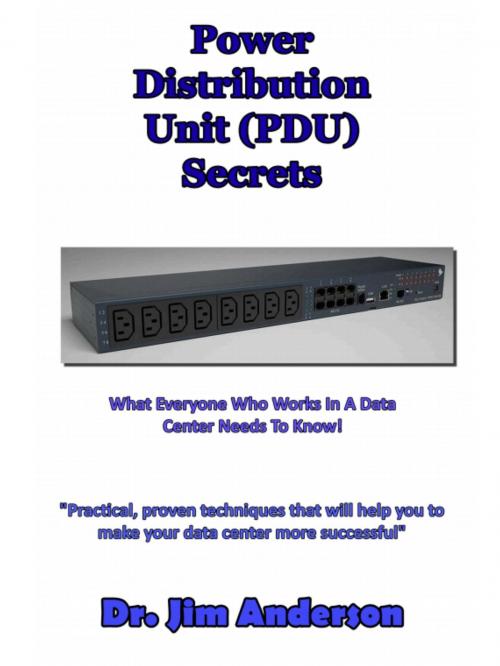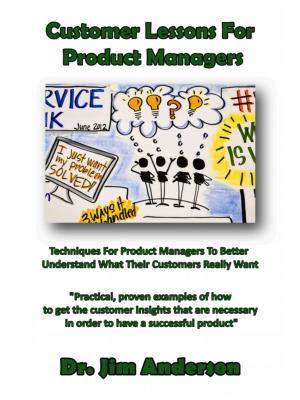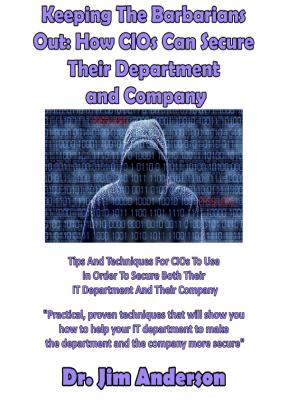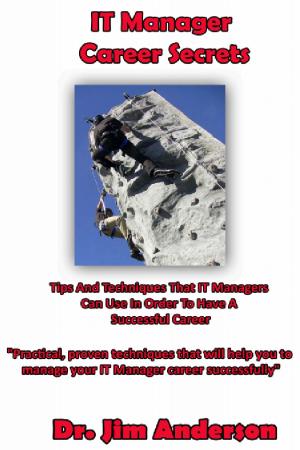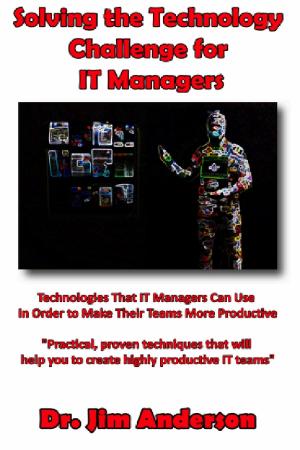Power Distribution Unit (PDU) Secrets: What Everyone Who Works In A Data Center Needs To Know!
Nonfiction, Science & Nature, Technology, Electronics| Author: | Jim Anderson | ISBN: | 9781492838470 |
| Publisher: | Jim Anderson | Publication: | January 31, 2014 |
| Imprint: | Smashwords Edition | Language: | English |
| Author: | Jim Anderson |
| ISBN: | 9781492838470 |
| Publisher: | Jim Anderson |
| Publication: | January 31, 2014 |
| Imprint: | Smashwords Edition |
| Language: | English |
Power Distribution Units (PDUs) – you mean power strips, right? That's what I thought when I was first introduced to this product. Boy oh boy was I wrong! Yes, the PDUs that are manufactured to be sold to the owners and operators of data centers do bear some similarities to the simple power strips that we all use at home. But we are really talking about two very different products here.
What You'll Find Inside:
* POWER DISTRIBUTION UNITS (PDU): WHAT ARE THEY?
* WHY FUSES ARE BAD AND WHAT TO DO ABOUT IT
* WHAT THE WORLD OF FORMULA 1 AUTO RACING CAN TEACH DATA CENTER OPERATORS
* WHY DATA CENTER OPERATORS ARE SWITCHING TO USING HY-MAG
How much money do you think that a data center operator has invested in just one of the racks of computers that sits in his or her data center? There is the cost of the rack, of course, but then there's the cost of each of the servers that has been plugged into that rack, the networking gear, and the power distribution system. Not to mention the overhead of cooling and power distribution to the rack. Very quickly the value of a single rack can reach US$500,000.
Clearly it's in the best interests of the data center operator to know exactly what is going on with their investment. Questions that need to be answered include how much power is being used, if there is currently a fire, are there any hot spots, and whether there are any liquids in the area.
The problem with today's modern data center is that all too often the answers to these questions are not available unless staff are sent out on to the data center floor with tools to make measurements. This means that a lot could go on when nobody was looking.
Today's modern PDUs do so much more than just simply deliver power to the computers that have been plugged into a rack. They provide the "eyes and ears" that data center operators need in order to determine what is happening with their racks. Modern PDUs can support multiple types of sensors that can be used to piggy-back environmental information along with power usage information back to a central control system.
Sophisticated Data Center Infrastructure Management (DCIM) software applications promise to be able to monitor all aspects of a data center. However, they are expensive and require an additional investment to both install and then maintain. The use of PDUs to collect needed data center status information provides a simple and low cost way to automate the monitoring of a modern data center.
This book has been written to provide you with the information that you'll need in order to compare and contrast different types of PDUs. These sophisticated tools can be difficult to tell apart. This book will look at the features that you really needs and explain how you would use then in the real-world environment of a modern data center.
It is my hope that after having read this book, you'll have the knowledge that you'll need to go out and select the type of PDU that best meets the needs of your business. Once you've done this, you can then implement a solution that will allow you to always know what is going on in your data center.
Power Distribution Units (PDUs) – you mean power strips, right? That's what I thought when I was first introduced to this product. Boy oh boy was I wrong! Yes, the PDUs that are manufactured to be sold to the owners and operators of data centers do bear some similarities to the simple power strips that we all use at home. But we are really talking about two very different products here.
What You'll Find Inside:
* POWER DISTRIBUTION UNITS (PDU): WHAT ARE THEY?
* WHY FUSES ARE BAD AND WHAT TO DO ABOUT IT
* WHAT THE WORLD OF FORMULA 1 AUTO RACING CAN TEACH DATA CENTER OPERATORS
* WHY DATA CENTER OPERATORS ARE SWITCHING TO USING HY-MAG
How much money do you think that a data center operator has invested in just one of the racks of computers that sits in his or her data center? There is the cost of the rack, of course, but then there's the cost of each of the servers that has been plugged into that rack, the networking gear, and the power distribution system. Not to mention the overhead of cooling and power distribution to the rack. Very quickly the value of a single rack can reach US$500,000.
Clearly it's in the best interests of the data center operator to know exactly what is going on with their investment. Questions that need to be answered include how much power is being used, if there is currently a fire, are there any hot spots, and whether there are any liquids in the area.
The problem with today's modern data center is that all too often the answers to these questions are not available unless staff are sent out on to the data center floor with tools to make measurements. This means that a lot could go on when nobody was looking.
Today's modern PDUs do so much more than just simply deliver power to the computers that have been plugged into a rack. They provide the "eyes and ears" that data center operators need in order to determine what is happening with their racks. Modern PDUs can support multiple types of sensors that can be used to piggy-back environmental information along with power usage information back to a central control system.
Sophisticated Data Center Infrastructure Management (DCIM) software applications promise to be able to monitor all aspects of a data center. However, they are expensive and require an additional investment to both install and then maintain. The use of PDUs to collect needed data center status information provides a simple and low cost way to automate the monitoring of a modern data center.
This book has been written to provide you with the information that you'll need in order to compare and contrast different types of PDUs. These sophisticated tools can be difficult to tell apart. This book will look at the features that you really needs and explain how you would use then in the real-world environment of a modern data center.
It is my hope that after having read this book, you'll have the knowledge that you'll need to go out and select the type of PDU that best meets the needs of your business. Once you've done this, you can then implement a solution that will allow you to always know what is going on in your data center.
